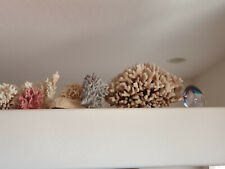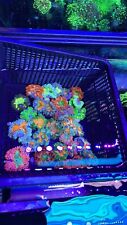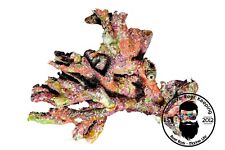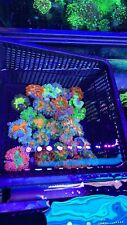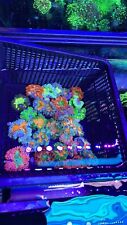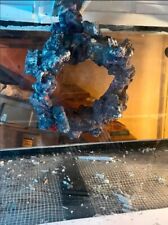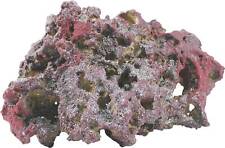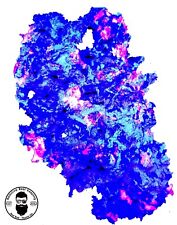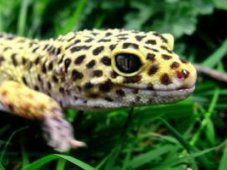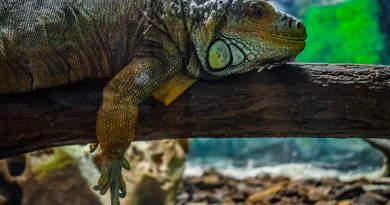Care of Green Iguanas
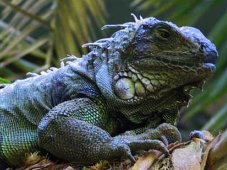
Housing Your Iguana
Green iguanas can quickly outgrow their enclosures, so if you can not provide enough room, consider carefully whether these are the right pets for you. It’s a common myth that a smaller home will keep your reptile small. While an aquarium is fine for young animals, after a year or so a young iguana will have outgrown a 55 gallon tank. You’ll need an enclosure or terrarium at least twice the length of the reptile, and at least six feet high throughout your pet’s life. You also need to provide climbing materials such as sturdy branches, and maybe shelves on which they can bask – iguanas like being up high and are natural tree climbers. As for substrate, loose substances such as sand or wood chippings will almost certainly be eaten by your reptile. Instead, choose kitchen towel, newspaper or butcher paper.
These cold-blooded reptiles will not be able to digest food properly if their habitat is not warm enough. You need to provide a basking spot with a temperature of up to 95°F, while general daytime temperature should be at least 80°F, but provide cooler and warmer areas so the iguana can move between them and regulate body temperature. Because it needs a day and night cycle, night-time heating must be provided without lights. Iguanas also need UVA and UVB light sources, both for producing vitamin D to fully absorb calcium and other nutrients. The best source of UV rays is the sun, so let your reptile bask in direct sunlight as much as possible. But you should also use the fluorescent UV bulbs you can buy in pet stores as an additional safety net. Have a protective cover round all lights to prevent burns.
Although iguanas often drink very little, they need an environment where humidity is between 65% and 75%. Dehydration is common and it’s bad news for your pet. Providing the right level of humidity is an often overlooked aspect of iguana care, but it will promote good kidney function and healthy skin shedding. To do this, spray the cage and iguana with water every day, keep a humidifier in the same room as the cage, and have large tubs of water in the enclosure. You could also give your reptile a daily shower or bath to keep moisture levels up.
Feeding Your Iguana
In the wild, iguanas are strict herbivores who eat little and often, so you should feed your lizard at least once per day. You should be careful of your fingers when feeding by hand. Although in captivity iguanas will eat almost anything, their specialized digestion system is designed for calcium-rich plant matter, so no matter how well you feed your iguana you should consider providing a weekly calcium supplement.
Iguanas will enjoy a wide range of vegetable and fruit material, which ideally should be fed in a 9:1 ratio. Try yours on kale, collards, arugula, watercress, or turnip greens. Experiment to see what the animal prefers, and offer your pet as wide a selection of different foodstuffs as possible. Nitrogen-rich green beans or peas are a good addition to the iguana diet, as are yellow squashes like butternut or acorn. Carrots, peppers and parsnips are also recommended. Fruits such as bananas, rich in potassium and phosphorus, make excellent treats, but be sure to buy organic and leave the skin on. Other potential treats could include occasional pieces of strawberry, raspberry, or cantaloupe. Avoid feeding foods high in harmful oxalic acids such as beet greens and chard.
Common Health Problems
Catching sickness early on is crucial, since iguanas can be good at hiding their health problems, so an illness could be more advanced than you think. Uncontrolled bleeding, unusually slow movement and reflexes, blood in the stools or runny stools, breathing problems, swollen limbs or digits, softness of the jaws, bites or traumatic wounds, vomiting, blisters or open sores, eye injuries or bleeding toes are all reasons to seek immediate help from a veterinarian specializing in exotic reptiles.
Metabolic bone disease, or calcium deficiency, is a common condition that can be avoided by providing your iguana with a weekly calcium supplement. Symptoms of deficiency include a soft or deformed jaw, and swollen limbs, weight loss and listlessness. If caught in time, it can be corrected by a change in diet or lighting, or calcium and vitamin injections may be needed. Your iguana can also play host to a variety of internal and external parasites. Take a fecal sample to a veterinarian specializing in exotic reptiles to check for internal parasites. Look for external parasites such as mites yourself – they can be seen as white, brown or moving dots. If you iguana has mites, clean him and his enclosure quickly and thoroughly.

